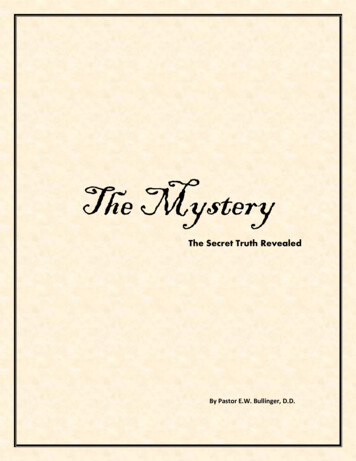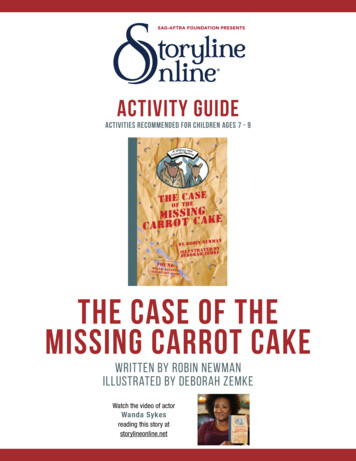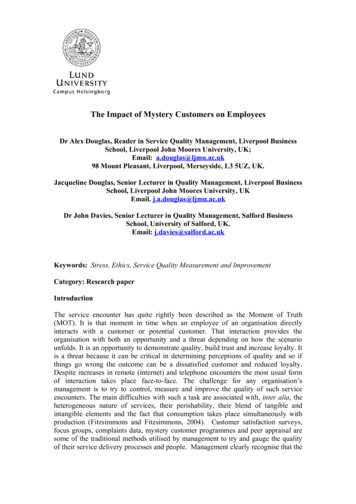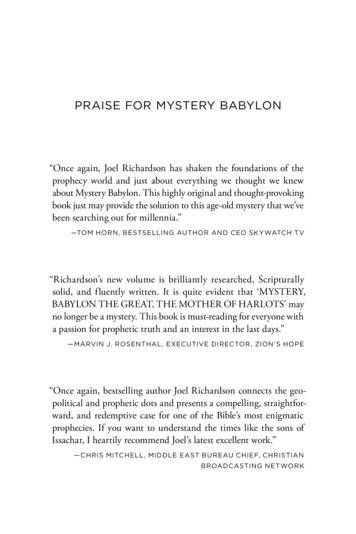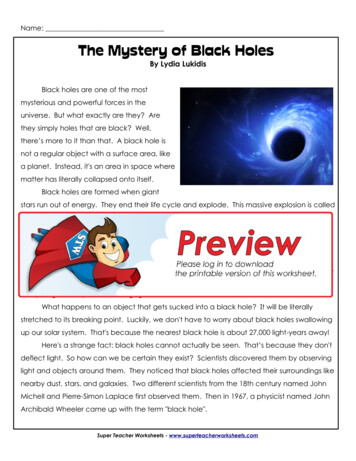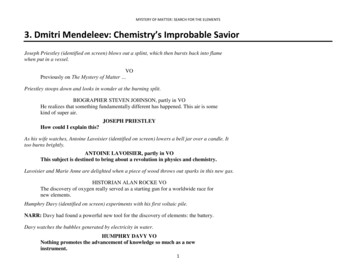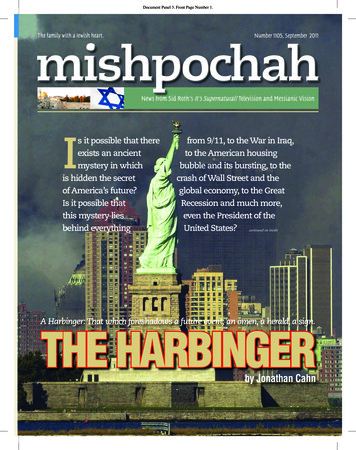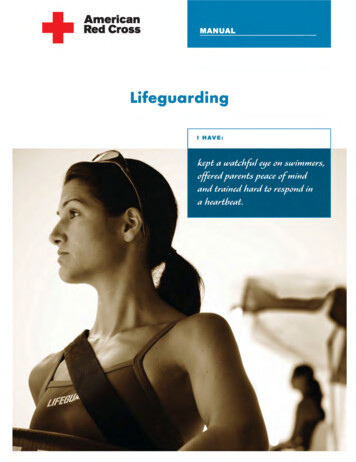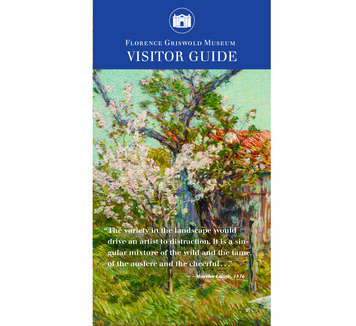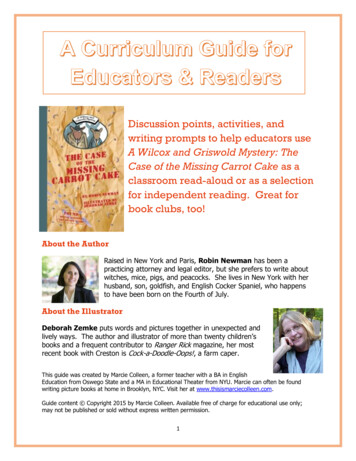
Transcription
Discussion points, activities, andwriting prompts to help educators useA Wilcox and Griswold Mystery: TheCase of the Missing Carrot Cake as aclassroom read-aloud or as a selectionfor independent reading. Great forbook clubs, too!About the AuthorRaised in New York and Paris, Robin Newman has been apracticing attorney and legal editor, but she prefers to write aboutwitches, mice, pigs, and peacocks. She lives in New York with herhusband, son, goldfish, and English Cocker Spaniel, who happensto have been born on the Fourth of July.About the IllustratorDeborah Zemke puts words and pictures together in unexpected andlively ways. The author and illustrator of more than twenty children’sbooks and a frequent contributor to Ranger Rick magazine, her mostrecent book with Creston is Cock-a-Doodle-Oops!, a farm caper.This guide was created by Marcie Colleen, a former teacher with a BA in EnglishEducation from Oswego State and a MA in Educational Theater from NYU. Marcie can often be foundwriting picture books at home in Brooklyn, NYC. Visit her at www.thisismarciecolleen.com.Guide content Copyright 2015 by Marcie Colleen. Available free of charge for educational use only;may not be published or sold without express written permission.1
Common Core Aligned for Grades 1-31st grade: ELA.RL.1.1, 1.2. 1.3, 1.4, 1.6, 1.7, 1.9, 1.10, ELA.SL.1.1, 1.2, 1.4, 1.52nd grade: ELA.RL.2.1, 2.2, 2.3, 2.4, 2.5. 2.6, 2.7, ELA.SL.2.1, 2.2, 2.3, 2.43rd grade: ELA.RL.3.1, 3.3, ELA.SL.3.1, 3.3, 3.4Before You Read Join the MFI1. Take a close look at the cover illustrationof A Wilcox and Griswold Mystery: TheCase of the Missing Carrot Cake. Can youpredict who this book is about? Whatabout when and where it takes place?What from the cover supports yourprediction?At the start of reading The Case of theMissing Carrot Cake, students can maketheir own detective badges.Take each child's picture wearing atrench coat, detective hat andsunglasses. You can even givechildren a magnifying glass tohold. Tell them to wear a seriousexpression.2. Read the prologue text. What do youlearn about the story from this blurb?What questions does it raise about thestory?Press each child's thumb onto aninkpad or color thumbs withwashable markers. Then havechildren press their thumbprintonto the badge.3. Read the chapter titles. Do the titles giveany further information regarding whatthe book might be about?4. Using all of this information, can youmake any predictions about what mighthappen in the book?Vocab DetectivesThe Case of the Missing CarrotCake contains many “detective-Give children pens or pencils andlet them fill in their stats.You can cover the badges with a layer ofclear packing tape on the front and backfor quick faux-lamination. Punch two holeson either side of the badge and attachstring to make a lanyard.related” words which may benew for students. Encourage them to use context clues from both thetext and illustrations to infer nnocentsuspectsurveillancecluespriorsfacts2
Additional Exploration:While they read, ask students to look carefully for words they do not know. Assoon as they come across a new vocabulary word, they should jot it down.Look up the unknown word in the dictionary. (Depending on the level of yourstudents, a student volunteer can do this or the teacher can.) Read thedefinition.Come up with a way to remember what the word means. Using Total PhysicalResponse, students can create an action that symbolizes the word and helpsthem remember it.The Recipe for a MysteryLike other genres, mysteries contain some special story elements. As your studentsread through The Case of the Missing Carrot Cake, instruct them to look for these keymystery ingredients.Characters:o Detectives characters trying to solve the mysteryo Witnesses characters who saw the crime being committedo Suspects characters who may have committed the crimeWhen reading a mystery, keeping track of suspects can help students better solve thecrime. As they read through The Case of the Missing Carrot Cake, students shouldrecord information regarding the suspects.Suspect’s spect’sguiltAlibis“Detective’s Check this boxif theHunch” *character is nolonger asuspect* “Detective’s Hunch”—Do you feel in your gut this character is guilty or innocent? Whyor why not?3
.Lie DetectorHow do characters behave when questioned? Do they act suspicious?Can you tell when someone is lying? How?When lying, people are more likely to:offer shorter responseslaugh nervouslytalk really fastget emotionalmake more speech errors - more um’s, er’s ah’s.blink oftenfidget moreHere’s a short activity to help students develop the skill of catching a lie.1. Have everyone in the classroom close their eyes.2. While eyes are closed, place a small item into the hands of one student. This item must remainhidden.3. Once the item is hidden, have students open their eyes.4. A detective volunteer can begin questioning students on the whereabouts of the item:Do you have the item?Do you know who has the item?Could you describe the item to us? What does it feel like when you hold it?If you had the item, would you let us know?When questioned, all students must answer honestly, except for the student who holds the item.The guilty student must lie.The detective, and other students, must keep an eye and ear out for the lie.5. After everyone in the class has been questioned, ask if anyone has an idea of who was lying. Whatare the reasons that suspect’s answers led to the accusation?6. Play can go on by changing up the detective and the thief in each round.4
Setting:o The location where the mystery takes placeo The time of day/month/year the mystery takes placePlot:oooMysteries include one of the following:a problem that needs to be solvedsomething that is lost or missinga crime that has been committedUsing a table, such as the one below, students can track the parts of The Case ofthe Missing Carrot Cake, including suspects and clues, either individually or as aclass.BeginningIntroduction of characters:MiddleDetectives investigate cluesand suspects.Suspects:Enter problem/conflict:1.2.3.Clues:1.2.3.Finally 5EndThe mystery is solved.How?
Making Connections:Detectives, and readers of mystery, need to have a keen eye and memory.Here is an activity to develop observational skills.THE MYSTERY VISITOR: Have someone unannounced (a teacher or a studentfrom a different class) come into your classroom while students are workingquietly on a task at their desks. Plan with the mystery visitor ahead of time tomake sure he or she does several things in your class during his or her briefvisit such as:Borrow something like a book, a craft supply, money, etc.Talk to a student in the classGive a note to the teacherAsk a questionSet something down on a tableAfter the visitor leaves the room, have the students write down as manydetails as they can remember about the visit.What details do they recall? What was the visitor wearing? How longwas the visitor in the room? What did the visitor borrow while in theroom? Whom did he or she talk to? What did he or she say?Once everyone has finished writing, ask students to share their observations.Compare notes. What are the similarities and differences between studentreports?6
Chapter 1—Case File #1113: The Missing Carrot Cake1. Miss Rabbit calls to report a crime. What is thecrime? What other information does she giveWilcox at this time?2. Explain why you think Miss Rabbit is so upset.3. If you were Wilcox, what questions would youplan to ask Miss Rabbit when you got to herrabbit hole? Make a list of those questions.4. Imagine that you are Wilcox and you spend allday answering the phone at MFI Headquarters.Using the dialogue in Chapter One as mentor text, write the dialogue of threeother incoming calls reporting crimes. Be sure to include the Code number (i.e.,Code 12 is a missing cake).5. Imagine that Wilcox and Griswold have helped you solve a crime. Write a ThankYou letter to Missing Food Investigators. Be sure to include what the crime was,how they solved it and who was the criminal.Making Connections:Wilcox and Griswold are MFIs, Missing Food Investigators. They help the animalson the farm recover lost, stolen or missing food.Whom would you turn to for help in the following situations:Someone is teasing you on the playground.Your library book is suddenly missing.Your brother or sister hides your favorite toy.Your bike is stolen.Write a short story about one of the above situations and how you seek help.7
Chapter 2—The Crime Scene1. At what time did Miss Rabbit call Headquarters? At what time do Wilcox andGriswold arrive on the scene? How much time has gone by?2. What kinds of clues do Wilcox and Griswold find at the scene?3. What happened, according to Miss Rabbit?4. Why does Wilcox ask whatkind of cake? How mightthis information lead him tothe thief?5. What are someobservations that Wilcoxand Griswold make aboutMiss Rabbit whileinvestigating the crime scene?Classroom CSIPlace twenty-five different objects on a tray and havestudents study the tray for thirty seconds. Then remove thetray from sight and have students write down all of theobjects that they remember.6. Whom do Wilcox and Griswold think of as the first suspect? Why?7. Why do Wilcox and Griswold think the crime might have been an “inside job”?8. List the many ways that Wilcox and Griswold investigate the crime scene, aside frominterviewing Miss Rabbit.Making Connections:It is important for detectives to use their eyes when investigating a crime scene,but they must also use their ears. Luckily, Wilcox & Griswold have large ears thathelp them pay close attention to what is told to them.Here is a fun activity to promote careful listening and speaking skills.Place students into pairs and have them sit back to back. Have one student in thepair draw a unique picture using simple shapes (hearts, flowers, stars, houses,stick figures, etc.). Give the second student in the pair a blank piece of paper.The student with the picture must dictate to his/her partner how to draw thepicture. Make sure to emphasize no cheating or peeking! When finished, changethe pictures around the groups and have the partners switch roles. Wheneveryone has drawn once, the team with the most similar pictures wins!8
Chapter 3—Suspects and CluesWanted by the MFI1. Be sure to carefully record all cluesand suspects before moving on tohelp solve the mystery. Can youpredict who the thief is?Wilcox and Griswold are on the hunt for suspectsto solve their crime.Using Robin Newman and Deborah Zemke’s biosin the back of the book as a guide, have studentscreate their own WANTED posters.2. What is the first question Wilcox andGriswold ask Fowler? Why is thisquestion important?Be sure to include:3. How is Fowler threatening Wilcoxand Griswold with her given alibi?A photograph of themselvesA creative alias4. What odd information do Wilcox andGriswold gather from Fowler? Howdoes this information lead them totheir next suspect?A made-up file numberA “place last seen”A reason why they are wanted by theMFI. The reason can either be inconnection to The Case of the MissingCarrot Cake or another mystery.5. Based on Porcini’s story of whathappened, write your own version ofthe scene. Be sure to include thedialogue and description, staying asclose to Porcini’s account aspossible, while also adding your owncreativity.Display the WANTED posters on a bulletin boardwhen completed.Extension: Create WANTED posters for Fowler,Porcini, and Hot Dog.6. What do you think Wilcox andGriswold hoped to find in Porcini’spigsty? What kind of evidence would make Porcini guilty?7. List the evidence that points to Hot Dog being the thief.8. Do you believe Hot Dog’s story? Why or why not?9. Can you predict what Wilcox’s plan is?9
Making Connections:Often detectives search for crime scene evidence in the form of fingerprints andfootprints. Hot Dog’s footprints do not match the footprints found at the crimescene, therefore he is cleared.Using a washable non-toxic paint, make a footprint of one of each student’s shoes.Once dry, randomly choose a footprint from the group. Pretend that this footprintwas found at the scene of the crime.Through careful investigation, the class must try to find out whose shoe print waschosen. Ask students to write down in detail what led them to their answer.10
Chapter 4—Video Surveillance and Stakeout1. Be sure to carefully record all cluesand suspects before moving on to helpsolve the mystery. Can you predictwho the thief is?It has been a very long day for Wilcox andGriswold. No wonder they fell asleep on thestakeout.2. After reading page twenty-five, whatdo you think Wilcox and Griswold’splan is? What context clues lead youto that answer?Using the timestamps throughout the book,create a time log of their day. Be sure toindicate each hour using a drawing of a clockface.3. Why is Fowler quickly dismissed as asuspect?4. Do you still think Hot Dog and Porciniare suspects? Why or why not?Captain’s LogBe creative and observant. When did Wilcoxand Griswold eat? How many hours were theyon the stakeout? When did they fall asleep?Use context clues throughout the book to fillout the log.Making Connections:Detectives often hide somewhere to secretly watch for illegal activity. This iscalled a stakeout. Sometimes they use cameras, video cameras, or high-techaudio recording devices to gather the evidence. These are surveillance tools.Pretend you want to solve a mystery. Maybe you want to know where yourmissing socks from the laundry go. Maybe you want to know who keepsmoving your toys. Maybe you want to know if your dog ate your cookies.Plan a stakeout.Where would you hide?What surveillance tools would you use to help gather the evidence?What else would you take on a stakeout? Food? Drinks? Something topass the time?Draw a map of the stakeout area complete with any and all details ofyour plan.Present your stakeout plan to the class.11
Chapter 5—The Morning Starts with a Scream1. Be sure to carefully record all cluesand suspects before moving on tohelp solve the mystery. Can youpredict who the thief is?2. Wilcox and Griswold fell asleep onthe stakeout. How can they still findout who stole the cake?3. The first videotape didn’t work. Whatwas their backup plan?4. Look back through the book. What are some clues you can now see that pointto Miss Rabbit?Making Connections:Imagine that you are Miss Rabbit. You don’t want to wake up every morninghaving eaten a cake. Research what causes sleepwalking and ways to prevent it.Based on what you discover, design a plan to end Miss Rabbit’s sleepwalking andkeep the neighborhood cakes safe.12
Chapter 6—The Long-Awaited Party1. Now that the case is closed, be sure to record all of the details in a “DetectiveCase Report.” Be as specific and thorough as possible.a. Characters (detectives, victim, suspects)b. Setting (where the story takes place)c. Clues (in the order they were discovered)i. Cite contextual reasons for why something is considered a clueii. Who discovered theclue?Case Closed Celebrationd. Red Herrings (anydistractions for the persontrying to solve the mystery)Solving a crime requires a lot of teamwork.Celebrate the closed case with a Detectivethemed party. Include a scavenger hunt, readaloud your original mystery tales and share othermysteries that can be found in the library.e. Conclusioni. Who committed thecrime?Maybe even serve food with secret ingredients—or Mollie Katzen’s Carrot Cake. Just keep an eyeout for sleepwalkers!ii. What evidence led tothe solving of thecrime?Extension: For extra fun, invite parents andcaregivers!2. Read the Epilogue at the end of thebook. “Every day food goes missing from the farm. Sometimes it’s lost.Sometimes it’s stolen. Sometimes it just runs away.” Write another mysterycase for the MFIs using a Recipe for a Mystery in the Before You Read section.13
After You Read Here are a few extension activities to further the learning and the fun!1. Have students work together to create a newscast about the mystery to presentto their classmates. Students will write a script and take on the roles of anchorsand on-site reporters. Students can choose to interview suspects from the caseor even eyewitnesses to the crime. Videotape the final newscasts so thatstudents can watch themselves on TV. Students can use their completedDetective Case Reports to help them write a script.2. Invite a local police officer or detective to talk to students about solving realcases in the community. Students should prepare questions ahead of time.Topics can include fingerprints, DNA, and other clues they collect to solve crimes.You can also visit the FBI for Kids website.3. Visit the FBI’s Kids website (http://www.fbi.gov/fun-games/kids/kids) for furtherresearch. Ask students to browse the site and to find five interesting facts aboutthe FBI that they did not know. Share those facts with the class.14
the book might be about? 4. Using all of this information, can you make any predictions about what might happen in the book? Vocab Detectives The Case of the Missing Carrot Cake contains many “detective-related”words which may be new for students. Encourage them to use context clue

